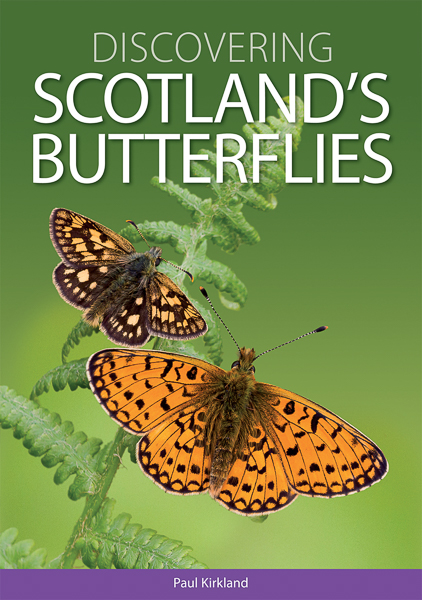 |
by Paul Kirkland.
Scotland is an exciting place for butterfly-watching. The rapidly changing distribution of many species creates an enthralling environment for recorders and nature-lovers, while remote glens and islands undoubtedly hold undiscovered rarities. Discovering Scotland's Butterflies is for everyone who gets a buzz from seeing a butterfly, providing details of life cycles, habitats, ecology and distribution of the thirty plus species. Numerous anecdotes illustrate the pleasure to be gained from watching common butterflies or the thrill of discovering scarce ones. The book also covers butterfly gardening, climate change, studying and conserving butterflies, and places to see them. Over 15 photographers have generously supplied superb images.
[I should declare that I've contributed several photos to this book (including the cover shot), and some of my anecdotes are also included, although I've tried to remain as objective as possible in the review below.]
I've been very fortunate to spend a good amount of time in Scotland, experiencing many of its unique habitats and associated butterfly fauna, and I have to say that this is the first book I've read that really captures the essence of the country from a Lepidopterist's perspective. What could have been a fairly dry read that focuses purely on the butterfly species to be found is complemented with many additional elements that make for a more rounded picture. As Paul Kirkland writes: "This book is meant neither as a field guide or traditional butterfly atlas ... this book is simply for anyone who gets a buzz from seeing a butterfly ...". That 'buzz' is what I was left with, having read the book over the last couple of days, and I cannot wait to pay a return visit to one of my favourite places on planet Earth!
The book starts with some 'butterfly basics' which will clearly appeal to those less familiar with aspects of butterfly ecology and provides a nice gentle introduction to what follows.
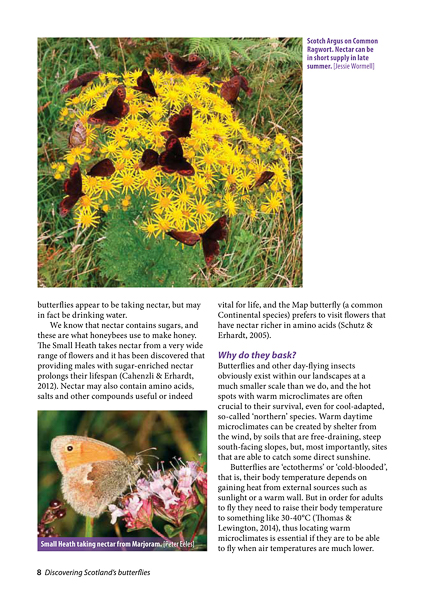 |
This is followed by a section on Scotland's landscapes and habitats, which contains stunning images that bring to life the rich variety of habitats to be found in the country.
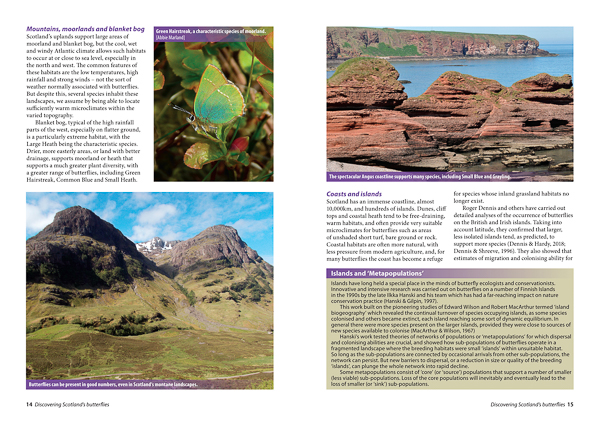 |
The sections that follow cover a variety of fascinating topics. The historical backdrop to the butterflies of Scotland explains how the butterfly fauna developed after the last Ice Age and which "... wiped the slate clean of butterflies in Britain", with the book clearly building on the last serious piece of work to cover the whole of Scotland - George Thomson's The Butterflies of Scotland, published in 1980. A discussion on butterfly names follows (who knew that the Scots word for a hairy caterpillar was 'oobit'?!) along with an introduction to the butterfly families. There is also a nice section on variation that discusses the subspecies and races to be found in Scotland, with the author concluding that: "It is perhaps odd that the Scottish form of Chequered Skipper was not given a different sub-specific name to separate it from the (now extinct) English form".
One thing that stands out in this work is the contribution from other enthusiasts - the first coming from Peter Marren who discusses his time spent in North-east Scotland. This has an interesting focus on how some species familiar to him in southern England were somewhat different in appearance - even those that weren't necessarily recognised subspecies - and that there was therefore an opportunity for new discoveries to be made. The under-recording of Lepidoptera in this part of the world leads Kirkland into a discussion on the importance of citizen science and the part that we can all play in helping both understand and conserve our butterfly fauna.
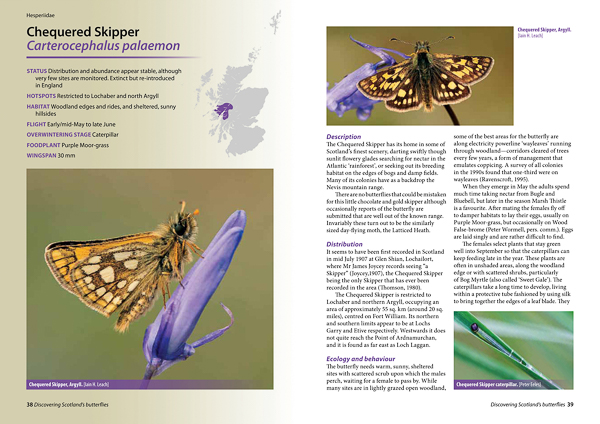 |
The various species accounts then follow, each containing key characteristics of the species, together with maps and information on distribution, ecology, behaviour, trends, outlook and where to see the species in question. These descriptions are another area where the author has included perspectives of other enthusiasts who have something to share about the species in question. I must admit, I really liked this aspect of the book - it somehow adds another dimension since we are able to hear, in their own words, how others have felt when coming across the species being discussed. These anecdotes definitely add to the 'buzz'.
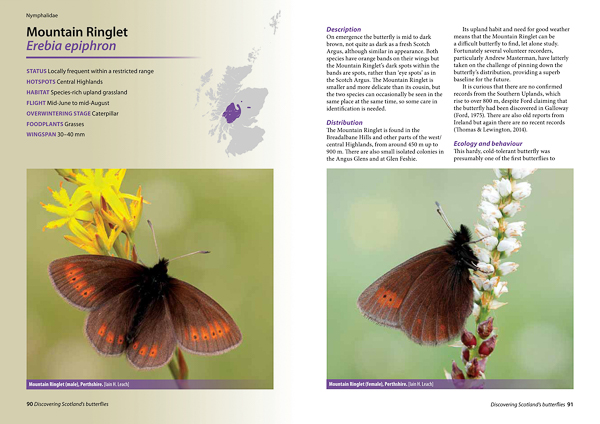 |
Concluding sections discuss topics such as rare visitors and day-flying moths. I personally found the section 'What next for Scotland's butterflies?' particularly interesting, especially as our butterfly fauna shifts in response, especially, to climate change - as stated in the book preface: "The remarkable recent changes in distribution of many of Scotland's butterflies, together with the new arrivals, have created an exciting environment for butterfly recorders, nature-lovers, wildlife gardeners and scientists". The book also contains a listing of recommended sites and the species to be found at each.
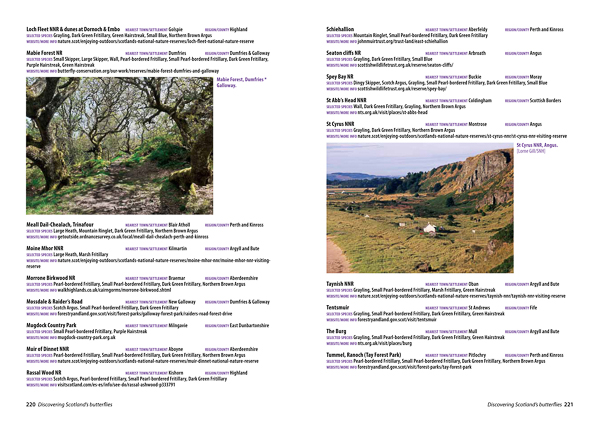 |
In summary, this much-anticipated work lives up to expectations and will, I am sure, inspire readers to visit this beautiful part of the world and search out its butterfly treasures. Highly recommended.
The book can be ordered directly from the publisher.